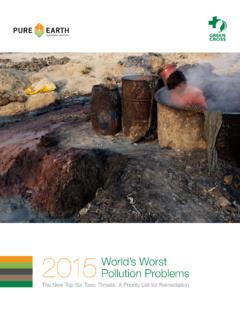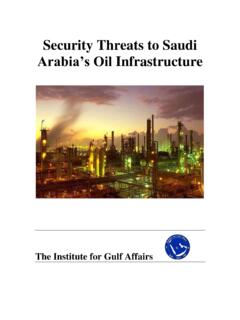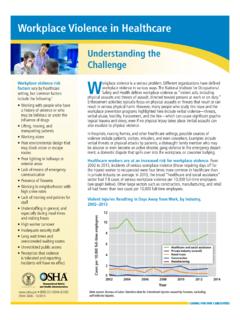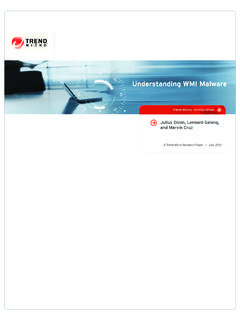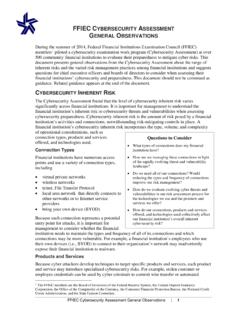Transcription of THE WORLDS CLEANUP, WORST 2013: PROGRESS, THE TOP …
1 THE WORLDS WORST 2013: THE TOP TEN TOXIC THREATSCLEANUP, PROGRESS, AND ONGOING CHALLENGESI ntroduction and Context 4 Flagging Polluted Places 4 From Ten to Many 4 Scope of the Problem 5 Toxic Pollution and Human Health 6 Addressing the Identified Toxic threats 7 What Can Be Done? 7 The New Top Ten 8 Background and Rationale 9 Agbogbloshie Dumpsite, Ghana 10 Chernobyl, Ukraine 12 Citarum River, Indonesia 14 Dzershinsk, Russia 15 Hazaribagh, Bangladesh 16 Kabwe, Zambia 16 Kalimantan, Indonesia 17 Matanza-Riachuelo, Argentina 17 Niger River Delta, Nigeria 18 Norilsk, Russia 18A Special Note on Fukushima 15 The 2006 and 2007 Top Ten: Where Are They Now? 20 Linfen, China 21 Chernobyl, Ukraine 22 Haina, Dominican Republic 23 La Oroya, Peru 24 Sukinda, India 25 Rudnaya Pristan, Russia 26 Mailuu-Suu, Kyrgyzstan 27 Kabwe, Zambia 28 Ranipet, India 30 Sumagayit, Azerbaijan 31 Tianying, China 32 Dzershinsk, Russia 33 Norilsk, Russia 34A Special Note on India 34 About Green Cross Switzerland 35 About blacksmith institute 35 This document was prepared by blacksmith institute and Green Cross Switzerland with input and review from a number of experts and volunteers, to whom we are most questions, comments, and feedback, please contact.
2 Angela BernhardtBlacksmith Institute475 Riverside Drive, 860 New York, NY 10115+1 212 647 GysiGreen Cross SwitzerlandFabrikstrasse 178005 Zurich, Switzerland+41 (0) 43 499 13 OF CONTENTS4 I blacksmith institute GREEN CROSSTHE WORLDS TOP TEN TOXIC threats IN 2013 | 5 This 2013 report is the eighth in an annual series of reports released by Green Cross Switzerland and blacksmith institute . Previous reports have high-lighted some of the world s WORST polluted places, presented examples of successful cleanup projects, and outlined the world s WORST pollution problems. This year s report takes a look at the progress made in dealing with some of the world s WORST polluted places and sets this against the ongoing identification of thousands more, less notorious, polluted places.
3 This examination of industries, pollutants, and sites is based on data collected by Green Cross Switzerland and blacksmith institute and on industry information, public sources, and the scientific Polluted PlacesThe World s WORST Polluted Places reports in 2006 and 2007 brought problems of highly polluted places to international attention by listing about 40 notori-ous sites worldwide, selected by a panel of knowl-edgeable specialists. These listings, as explicitly acknowledged in the reports, were based on limited information and data. This was only to be expected, since pollution by its nature shuns the lists covered a wide range of polluted places, ranging from industrial plants and mining facilities, through industrial estates and SME clusters, to areas of polluted air and water, and some major indus-trial disasters.
4 The criteria used in identifying these sites included the size of the population affected (in particular if children were at higher risk); the potency bates that the Top Ten lists generated. Real progress has been made in some cases, although not every-where and often not enough. The findings show that much can be achieved through focused intervention and site remediation, but also that much more re-mains to be accomplished at some of these sites. From a broad scope of problems identified in the initial reports, the work of Green Cross Switzerland and blacksmith became more focused on mining, industrial and chemicals issues as critical areas for addressing contamination and remediation. Green Cross and blacksmith also recognized that other important problems such as urban air pollution, dirty rivers, and industrial accidents are wider than just polluted places and require different approaches.
5 The emphasis in interventions has been increasingly on a relatively small number of sectors that result in widely distributed but similar problems, rather than individual high profile hotspots. This shift has been guided by the large amount of data that has been gathered over recent years on nearly three thousand individual sites in more than 70 countries. Disaster sites are no longer specifically identified in of the toxicants involved; and clearly established pathways and impacts. These have not changed. However, the lists of sites that are now the focus of polluted places efforts have certainly Top Ten Toxic threats report builds upon previous reports to highlight the progress of many contaminated sites and an increased understanding of the far-reach-ing effects of toxic pollution.
6 The 2012 report utilized disability-adjusted life years (DALYs) to reveal that over 125 million people are at risk from toxic pollution in 49 low- and middle-income countries. That number has since been revised up to 200 million. The strikingly high number of people at risk established toxic pollu-tion as a public health threat equivalent to more highly publicized public health problems such as malaria and tuberculosis. Even though toxic pollution remains a far less well-known problem, it is believed to have a similar impact on death and disability in developing countries as many well-known and well-funded diseases. This year s report demonstrates this increased understand-ing of the problem and how much progress has been made in the past several years.
7 It also demonstrates how much further there is to go. From Ten to ManyThis year s report presents updates and progress made at the original WORST polluted sites, pulling together information from research and academic papers, news and media attention, and reports from in-country staff and investigators. More information has become available, some in response to the de-Green Cross and blacksmith operations but, sadly, accidents continue to occur, with Fukushima a les-son against complacency in regard to our ability to design and manage successfully large and hazard-ous operations. Consequently, this years report also addresses the industries identified over recent years as the top polluters globally and provides illustra-tions of the level of disease burden attributable to toxic pollution at some typical sites.
8 Scope of the ProblemGreen Cross Switzerland and blacksmith currently estimate that more than 200 million people are at risk of exposure to toxic pollution globally. This estimate has increased substantially over the past several years, both because the scope of the exposure is increasing and because there is a better understanding of the problem. In order to better understand the morbidity and mortal-ity associated with toxic pollution, Green Cross Swit-zerland and blacksmith quantified the public health burden in last years report by calculating the DALYs associated with the issues (the DALY being the recog-nized measure of the health burden, as established by the World Health Organization (WHO)). That report INTRODUCTION AND CONTEXTSITES SURVEYED BY blacksmith INSTITUTE6 I blacksmith institute GREEN CROSSTHE WORLDS TOP TEN TOXIC threats IN 2013 | 7then examined the burden that toxic pollutants can put on population health in the context of the contaminated sites that are the focus of Green Cross Switzerland and blacksmith s work.
9 The identification and investigation of polluted sites is an ongoing task, increasingly being picked up and shared by local agencies in the countries involved. Therefore discussion of geographic regions in this report is by no means complete since it only represents sites are have been identified and are under investigation to date. Toxic Pollution and Human HealthThe health effects of toxic pollution vary greatly in both the range and severity of disease and disability with which they are associated. The World Health Organiza-tion, in conjunction with the World Bank, estimates that 23% of deaths in the developing world are attributable to environmental factors, including pollution, and that environmental risk factors contribute to more than 80% of regularly reported In fact, it is estimated that up to 37% of a country s total disease burden could be prevented by achieving environmental improvements It is currently estimated that nearly one-fifth of The shortage of adequate resources in many low- and middle-income countries increases the severity of health impacts from toxic pollution while simulta-neously marginalizing those who need help the most.
10 An objective of the work of blacksmith institute and Green Cross Switzerland and one goal of this report is to enhance understanding and funding for this crucial area of public the Identified Toxic ThreatsThe objectives of Green Cross Switzerland and blacksmith are not just to identify and publicize toxic problems but, more importantly, to find and implement practical solutions. This requires, in the most urgent cases, beginning to put in place effective approaches even if the initial solutions are only a start on the long-term cleanup that is of the most important areas of progress since the initial World s WORST reports is the gradual emergence of a broad coalition of international organizations, public and private, who have recognized the scale and importance of the toxics agenda and who are cooper-ating to address it.

